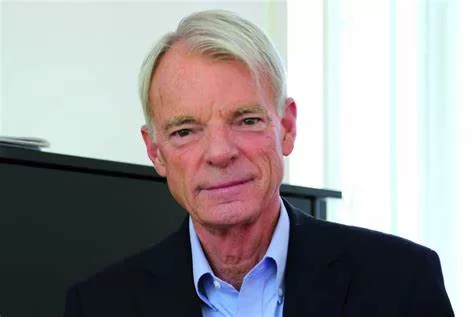
当然,以下是配套的英文新闻稿,结构清晰、用词专业,适合用于国际传播或英文媒体发布:
SHENZHEN, May 17 (WSH) — Speaking at the 2025 Tsinghua PBCSF Global Finance Forum in Shenzhen, Nobel Prize-winning economist Prof. Michael Spence on Saturday offered sharp insights into global trade tensions, U.S. monetary policy, and the rapid evolution of artificial intelligence. He emphasized that the United States’ recent tariff strategies are not just influencing bilateral relations—but are actively reshaping the architecture of the global trade system.
U.S.-China Negotiations Show Optimism, But Long-Term Risks Remain
Addressing the ongoing trade talks between China and the United States, Spence called the current stage “a mid-course correction” and welcomed the renewed negotiations. “Nobody wants to stay on a path of mutual harm,” he noted. While the Trump administration leans heavily on bilateral talks, Spence believes such an approach has been “relatively appropriate” so far.
He underscored the stakes: “The U.S. accounts for 25% of the global economy, with 13% of its imports coming from China, while 15% of China’s exports go to the U.S.—these are significant numbers.”
Federal Reserve Remains Cautious Amid Uncertainty
On the question of whether tariffs could influence Federal Reserve policy, Spence acknowledged it as a real source of uncertainty. “The Fed is primarily focused on employment and inflation, and right now, it’s in a wait-and-see mode,” he explained. While inflationary pressures have eased slightly, the full impact of cost increases from supply chain disruptions remains to be seen.
He added that while capital expenditures are falling and tourism remains sluggish, consumer demand is relatively stable—possibly keeping inflation from spiking in the near term.
Three Possible Futures for Global Trade—And One Most Likely
Spence outlined three scenarios for the future of global trade in response to shifting U.S. policies:
- A return to unilateral protectionism—a disastrous path;
- A world divided by U.S. and China influence, leaving emerging markets in the middle;
- A coalition of Europe, China, and emerging markets coalescing around a functional multilateral trade system.
Spence believes the third scenario is the most likely. Even if the U.S. continues to show anti-multilateral tendencies, the rest of the world may press forward, with the U.S. possibly rejoining the global consensus in the future.
AI’s Global Impact and China’s Emerging Role
On the topic of artificial intelligence, Spence expressed admiration for its extraordinary pace of development. “Every day, there are new breakthroughs,” he said, pointing to China’s rapid progress and the global spread of open-source AI models such as DeepSeek.
He observed that although semiconductor constraints remain, China and other countries are narrowing the AI gap with the U.S., and smaller, more efficient models are helping to democratize access. In the future, Spence expects AI to deliver transformative value in fields such as physics, materials science, and industrial innovation.
Background:
The 2025 Tsinghua PBCSF Global Finance Forum is being held in Shenzhen from May 17 to 18, under the theme: “Sharing the Future: Building an Open and Inclusive Economic and Financial System.” The event brings together top economists, policy makers, and industry leaders to discuss the challenges and opportunities shaping the world’s financial landscape.




